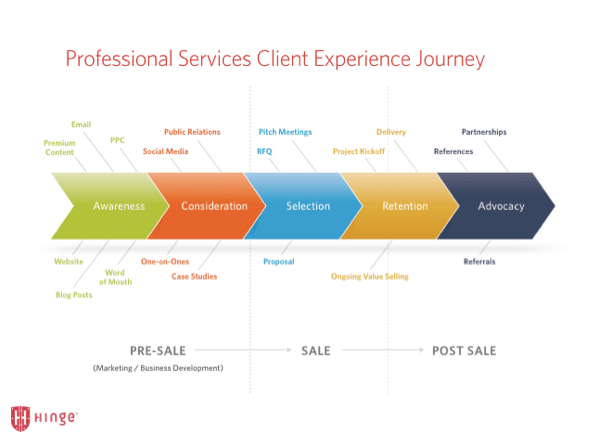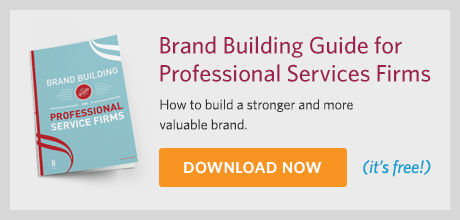Even when you have a loyal, long-standing client base, demonstrating value can be a challenge for many architecture and engineering firms. And sustaining growth can be an even more difficult task. While many firms today are enjoying the benefits of crane-filled skylines, the next slowdown is probably just around the corner.
Every fall, a few hundred executives from engineering, environmental and architecture firms across the country meet at the Growth & Ownership Strategies Conference to discuss growth and AE marketing trends — and how to apply them to their own firms to enhance their position in the marketplace.
In one of the keynote sessions, Anirban Basu, Chairman & CEO of Sage Policy Group, predicted an industry recession in 2017-18. Economic cycles are inevitable, so this should come as no surprise, but the one Basu predicts is a bit delayed because the prior one dragged out so long. The takeaway? Plan for a steep decrease in business in the near future.
Gerry Salontai, PE of Salontai Consulting Group, conducted another interesting session. He presented data from a study of ENR’s Top 500 companies and highlighted five pillars associated with those firms that did better than others during the last recession. Findings were also segmented by size — from small to mega size. Interestingly, in the last recession (2012-2013) small- to mid-size firms became endangered. He defined small- to mid-size as $22 million to $137 million, representing about 61% of market share.
The intent of the study was to identify common characteristics of resilient firms and share the findings with AE firms that want to strengthen themselves — in good times or in bad. Here are Gerry’s five pillars:
- True investment in staff (you should be able to prove it)
- Clear client-focused strategy (it should be documented)
- Smart diversification (look for adjacencies instead of huge leaps)
- Continuous focus on financial performance
- Ownership/leadership succession taken seriously
These five pillars are sound, and any firm that wants to weather a hot and cold marketplace should take heed. However, I would add a sixth pillar to the discussion — taking a systematic approach to AE marketing. I covered this during my afternoon presentation, Inside the High Growth Firm: A Scientific Approach to Marketing.
Given that 61% of Top 500 ENR firms fall in the “endangered category,” the best way to inoculate your firm against the next economic downturn is to find a reliable system to drive new business. In our research of professional services firms, we’ve learned that there is a new breed of service firms — firms that drive their growth by making their expertise more visible.
See also: 5 Trends Redefining Sales and Marketing in 2016
Firms that want to grow often rely on their reputation and expertise to propel them forward, but few actually recognize the role visibility plays in today’s client journey. Why is visibility so important? Because visibility is experienced by prospects before the sale. What contributes to this visibility? There are many ways this happens. Here are three of the most common:
- Writing regularly on topics of exceptional interest to your buyers
- Speaking frequently in front of your target audience
- Becoming findable online through search engine optimization
Expertise (what feeds the reputation) is experienced after the sale. Everyone talks about his or her expertise, and that makes it difficult to break through the noise. But by being strategically visible, firms can rise above the chatter. Why? Because a brand is more than a firm’s qualifications. It’s the product of both your reputation (expertise) and your visibility.

My session focused on five visibility techniques that directly support the expectations of today’s professional services buyer. These techniques speak to the criteria that buyers value most: specialized skills and expertise. Let’s go through these five techniques in turn:
- Invest in a high-quality professional website
In today’s marketplace, buyers expect you to have a professional website. Period. 80.8% of buyers of professional services check out a provider’s website. And 29.6% of them ruled out a firm because it had an unimpressive website.
Online and offline visibility are as essential as ever, and they both work together. That said, your website should be the hub of your marketing — it’s the place that almost every prospective buyer will turn at some point during their search for an architecture or engineering firm. Make yours count.
See also: Your website is the hub of your firm’s marketing
- Demonstrate serious expertise
 Specialized skills and expertise is the #1 criteria when selecting a new firm. In our research we learned that 72% of buyers mentioned that expertise tipped the scale in their decision-making. You’ll need to make sure that prospective clients can see that expertise (in your portfolio and client list) or experience it (by reading your firm’s educational content or listening to your experts speak at conferences).
Specialized skills and expertise is the #1 criteria when selecting a new firm. In our research we learned that 72% of buyers mentioned that expertise tipped the scale in their decision-making. You’ll need to make sure that prospective clients can see that expertise (in your portfolio and client list) or experience it (by reading your firm’s educational content or listening to your experts speak at conferences).
- Create educational content
Before the sale is made, your expertise is mostly invisible. Until people see your team at work, it’s difficult to gauge their depth of knowledge. That’s why it’s so important to create educational content that demonstrates your expertise and addresses your audience’s biggest challenges. 23.5% of buyers rule out a firm because of the poor quality of their content. And keep in mind that educational content is not marketing copy. It’s a free sampling of your knowledge and expertise. The more generously you share your knowledge, the more your readers are likely to trust you and seek you out when they have a need of your services.
- Network online
Social media is the online version of in-person networking, but with fewer restrictions:
- no scheduling conflicts
- no geographic barriers
- no expensive travel
When we studied buyers of professional services, we learned that 60.0% of buyers check out firms on social media. In fact, 17% of non-client referrals are made because of social media, and Millennials rarely refer providers who are not on social media. So literally, your future depends on it!
- Cultivate referrals
Even in the digital age, referrals are crucial. But referrals don’t always happen the way you might expect. Did you know, for instance, that 81.5% of firms have received a referral from people they’ve never met? Past clients account for only 5.5% of referrals, whereas 94.5% are generated by a firm’s reputation, expertise and visibility. Clearly, asking for referrals is not the way to go. Instead, the best way to encourage referrals is to build a more visible brand — a reputation that is broadly recognized and respected.
Marketing today is more scientific than ever. Digital tools give you access to a wealth of hard data that can be used to shape the way you approach the marketplace. You can monitor metrics that assess activity at every stage of the sales funnel, and you can use that information to make more informed marketing decisions and recognize market changes sooner. When deployed strategically, AE marketing can be a reliable engine that drives growth through thick and through thin.
Additional Resources:
- Read the primer on how AE firms in today’s marketplace grow: Navigating Change: A Primer on How AEC Firms are Winning New Business.
- Want to learn more about building a high-performance website? Check out our in-depth guide: The Lead Generating Website Guide.
How Hinge Can Help:
Find out how your marketplace really perceives your brand and learn what changes you need to make to appeal to your target audience and drive more business. Ask about our brand perception research today.

